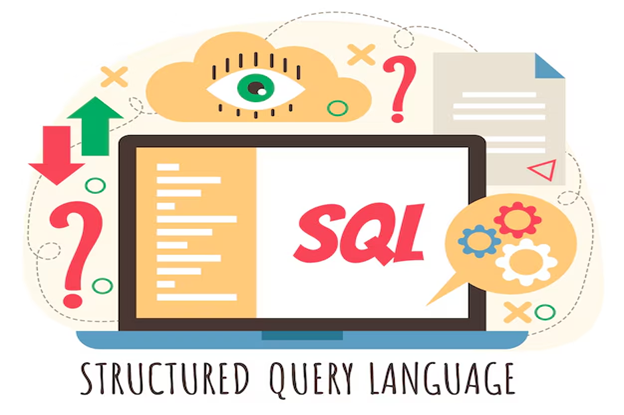Top Data Analysis Tools
Data analysis tools make it easier for users to process and manipulate data, analyze the relationships and correlations between data sets, and it also helps to identify patterns and trends for interpretation. Below is the list of some popular tools explain briefly:
- SAS :SAS was a programming language developed by the SAS Institute for performed advanced analytics, multivariate analyses, business intelligence, data management, and predictive analytics. , SAS was developed for very specific uses and powerful tools are not added every day to the extensive already existing collection thus making it less scalable for certain applications.
- Microsoft Excel :It is an important spreadsheet application that can be useful for recording expenses, charting data, and performing easy manipulation and lookup and or generating pivot tables to provide the desired summarized reports of large datasets that contain significant data findings.
- R :It is one of the leading programming languages for performing complex statistical computations and graphics. It is a free and open-source language that can be run on various UNIX platforms, Windows, and macOS. It also has a command-line interface that is easy to use. However, it is tough to learn especially for people who do not have prior knowledge about programming.
- Python:It is a powerful high-level programming language that is used for general-purpose programming. Python supports both structured and functional programming methods. Its extensive collection of libraries make it very useful in data analysis. Knowledge of Tensorflow, Theano, Keras, Matplotlib, Scikit-learn, and Keras can get you a lot closer to your dream of becoming a machine learning engineer.
- Tableau Public: Tableau Public is free software developed by the public company “Tableau Software” that allows users to connect to any spreadsheet or file and create interactive data visualizations. It can also be used to create maps, dashboards along with real-time updation for easy presentation on the web. The results can be shared through social media sites or directly with the client making it very convenient to use.
- RapidMiner: RapidMiner is an extremely versatile data science platform developed by “RapidMiner Inc”. The software emphasizes lightning-fast data science capabilities and provides an integrated environment for the preparation of data and application of machine learning, deep learning, text mining, and predictive analytical techniques. It can also work with many data source types including Access, SQL, Excel, Tera data, Sybase, Oracle, MySQL, and Dbase.
- Knime :Knime, the Konstanz Information Miner is a free and open-source data analytics software. It is also used as a reporting and integration platform. It involves the integration of various components for Machine Learning and data mining through the modular data-pipe lining. It is written in Java and developed by KNIME.com AG. It can be operated in various operating systems such as Linux, OS X, and Windows.
Applications of Data Analysis
The diverse applications of data analysis underscore its important role across industries, driving informed decision-making, optimizing processes, and fostering innovation in a rapidly evolving digital landscape.
- Business Intelligence: Data analysis is integral to business intelligence, offering organizations actionable insights for informed decision-making. By scrutinizing historical and current data, businesses gain a comprehensive understanding of market trends, customer behaviors, and operational efficiencies, allowing them to optimize strategies, enhance competitiveness, and drive growth.
- Healthcare Optimization: In healthcare, data analysis plays a pivotal role in optimizing patient care, resource allocation, and treatment strategies. Analyzing patient data allows healthcare providers to identify patterns, improve diagnostics, personalize treatments, and streamline operations, ultimately leading to more efficient and effective healthcare delivery.
- Financial Forecasting: Financial institutions heavily rely on data analysis for accurate forecasting and risk management. By analyzing market trends, historical data, and economic indicators, financial analysts make informed predictions, optimize investment portfolios, and mitigate risks. Data-driven insights aid in maximizing returns, minimizing losses, and ensuring robust financial planning.
- Marketing and Customer Insights: Data analysis empowers marketing strategies by providing insights into customer behaviors, preferences, and market trends. Through analyzing consumer data, businesses can personalize marketing campaigns, optimize customer engagement, and enhance brand loyalty. Understanding market dynamics and consumer sentiments enables businesses to adapt and tailor their marketing efforts for maximum impact.
- Fraud Detection and Security :In sectors such as finance and cybersecurity, data analysis is crucial for detecting anomalies and preventing fraudulent activities. Advanced analytics algorithms analyze large datasets in real-time, identifying unusual patterns or behaviors that may indicate fraudulent transactions or security breaches. Proactive data analysis is fundamental to maintaining the integrity and security of financial transactions and sensitive information.
- Predictive Maintenance in Manufacturing: Data analysis is employed in manufacturing industries for predictive maintenance. By analyzing equipment sensor data, historical performance, and maintenance records, organizations can predict when machinery is likely to fail. This proactive approach minimizes downtime, reduces maintenance costs, and ensures optimal production efficiency by addressing issues before they escalate. Predictive maintenance is a cornerstone in enhancing operational reliability and sustainability in manufacturing environments.
Future Trends in Data Analysis
The world of data analysis is constantly evolving, driven by technological advancements and the ever-increasing volume and complexity of data. Here are some of the most exciting trends shaping the future of this field:
Democratization of Data Analysis
- No-code/Low-code Platforms: Intuitive, visual interfaces empower non-technical users to explore and analyze data, democratizing insights across organizations.
- Embedded Analytics: Seamless integration of analytics into applications and workflows, making data-driven decision-making more accessible and immediate.
- Natural Language Processing (NLP): Conversational interfaces enable users to ask questions and access insights in plain language, removing technical barriers.
How to Become Data Analyst?
To become a data analyst you must require least a bachelor’s degree. To those who are at higher level , you may require a master’s degree. You also need to developed skills such as : Statistical Analysis, Data Visualization, Data Cleaning.

